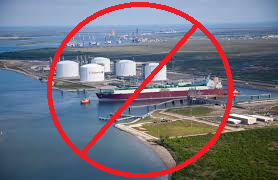Groundwater Not as Renewable as Thought
November 23, 2015Why Coal Mining Outlaw Don Blankenship's Conviction Matters
December 5, 2015By Neela Banerjee, InsideClimate News, November 19, 2015
An Environmental Protection Agency panel of independent scientific advisers has challenged core conclusions of a major study the agency issued in June that minimized the potential risks to drinking water from hydraulic fracturing.
The panel, known as the Science Advisory Board (SAB), particularly criticized the EPA’s central finding that fracking has not led to “to widespread, systemic impacts on drinking water resources in the United States.” The oil and gas industry has seized on the conclusion to argue that broad concerns about fracking’s impact on drinking water are overblown.
The SAB’s 30 members, from academia, industry and federal agencies, said this and other conclusions drawn in the executive summary were ambiguous or inconsistent “with the observations/data presented in the body of the report.”
“Of particular concern is the statement of no widespread, systemic impacts on drinking-water resources,” the SAB wrote in a preliminary report. “Neither the system of interest nor the definitions of widespread, systemic or impact are clear and it is not clear how this statement reflects the uncertainties and data limitations described in the Report’s chapters.”
The panel said that the EPA erred by not focusing more on the local consequences of hydraulic fracturing. “Potential impacts on drinking-water resources are site specific, and the importance of local impacts needs more emphasis in the Report. While national-level generalizations are desirable, these generalizations must be cautiously made…A conclusion made for one site may not apply to another site.”
The EPA also should have discussed in far greater depth its own investigations into residents’ complaints of water contamination in Dimock, Pa., Parker County, Texas and Pavillion, Wyo., the panel said. In each case, EPA scientists and consultants found early evidence of contamination but the agency ended the investigations before further monitoring or testing could be done.
The SAB’s assessment is part of the peer review of the nearly 1,000-page draft assessment issued by the EPA to address public fears about the possible effects of fracking on drinking water.
The SAB conducted meetings over several days in Washington, D.C. in late October to gather public comment on the EPA draft study. The SAB’s preliminary report for detailing its concerns was released in early November. It plans to continue discussion during a four-hour long teleconference on December 3. The panel lacks the authority to compel changes to the report and can only issue recommendations to the EPA.
Launched five years ago at the behest of Congress, the water study was supposed to provide critical information about the production method’s safety “so that the American people can be confident that their drinking water is pure and uncontaminated,” said a top EPA official at a 2011 hearing.
But the report was delayed repeatedly, largely because the EPA failed to nail down a key component: the prospective, or baseline, sampling of water before, during and after fracking. Such data would have allowed EPA researchers to gauge whether fracking affects water quality over time, and to provide best industry practices that protect drinking water.
EPA had planned to conduct such research, but its efforts were stymied by oil and gas companies’ unwillingness to allow EPA scientists to monitor their activities, and by an Obama White House unwilling to expend political capital to push the industry, an InsideClimate News report from March showed.
Still, the EPA report determined for the first time that fracking had fouled drinking water. The finding was a notable reversal for the Obama administration, which, like its predecessors, had long insisted that fracking did not pose a threat to drinking water.
The EPA report confirmed that there were “specific instances” when fracking “led to impacts on drinking water resources, including contamination of drinking water wells.”
The SAB plans to issue its draft recommendations in January 2016 and the final report in late spring, according to David Dzombak, the panel’s chairman and head of the department of civil and environmental engineering at Carnegie Mellon University. While the EPA is not obligated to act on the SAB’s recommendations, Dzombak said, the agency’s office usually sends a letter of response.



